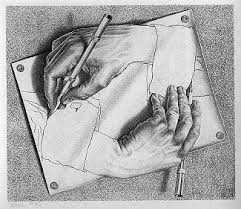Section4Quadratic Functions¶ permalink
Consider the function \(q(x)=ax^2+bx+c\), where \(a \ne 0\) (so that it's truly quadratic, and not linear).
We want to consider several features of \(q\), including
- shape (a parabola)
- the focus
- the roots
Equivalent expressions for \(q(x)\) are
- \(q(x)=ax^2+bx+c\)
- \(q(x)=a(x-m)^2+h\)
- \(q(x)=a(x-r_1)(x-r_2)\)
The values of \(m\) and \(h\), and the roots \(r_1\) and \(r_2\), are given using basic algebra:
- The vertex of the parabola is at \((m,h)=(\frac{-b}{2a},c-\frac{b^2}{4a})\)
- The roots of the parabola (where it intercepts the \(x\)-axis) are at \(\{r_1,r_2\}=\{\frac{-b \pm \sqrt{b^2-4ac}}{2a}\}\)
- The focal point of the parabola is at a height where the slope of the tangent line is 1, at \((m,p)=(\frac{-b}{2a},h+\frac{1}{4a})\)
\(a \gt 0\): A bowl (with a "double root"):
\(a \lt 0\): An umbrella, with symmetric roots:
